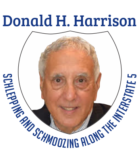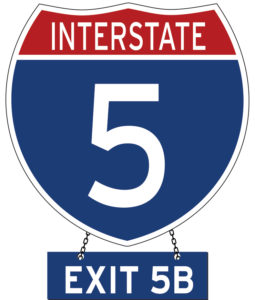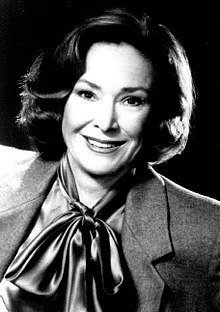Schlepping and Schmoozing Along the Interstate 5: Chapter 8 (Exit 5B: Main Street); Sesame Place

 Proceed East on Main Street nearly five miles and take a right on Heritage Road, proceed three-tenths of a mile to Entertainment Circle turn right, go three-tenths of a mile and turn left to remain on Entertainment Circle, In two-tenths of a mile turn right onto Otay Valley Road, entrance is about 350 feet ahead at 2052 Entertainment Circle, Chula Vista.
Proceed East on Main Street nearly five miles and take a right on Heritage Road, proceed three-tenths of a mile to Entertainment Circle turn right, go three-tenths of a mile and turn left to remain on Entertainment Circle, In two-tenths of a mile turn right onto Otay Valley Road, entrance is about 350 feet ahead at 2052 Entertainment Circle, Chula Vista.
Jewish TV Producer Lewis Freedman’s Enthusiasm For Children’s Education Led to Granddaughter of Jewish Mayor of Phoenix Pioneering ‘Sesame Street’ Television Show

“Chula Vista” is a Spanish name meaning “Pretty View,” which seems a fitting venue for an amusement park based on the children’s television show that was famous for promoting intercultural relationships. Nevertheless, this theme park is named “Sesame Place San Diego,” even though it is located within the suburban city of Chula Vista. The place name evidently was chosen to help people from other parts of the U.S. and international visitors to understand the park’s approximate location. A venture between the Children’s Television Workshop and SeaWorld (which has one its major theme parks in San Diego, located farther north on the I-5) combined in 2022 Sesame Street themed-rides and costumed characters with 11 water-oriented experiences retained from Aquatica San Diego, which had occupied the premises through the Summer of 2021.

Joan Ganz Cooney, a co-founder of the Children’s Television Network, which produced Sesame Street for Public Television, grew up in a mixed religious home. Her father, Sylvan Ganz, was the son of Emil Ganz, a German Jewish immigrant businessman and banker, who was elected several times in the late 19th and early 20th century as mayor of Phoenix. Sylvan followed his father into banking, but not into Jewish religious observance, describing himself as an atheist. He married Pauline Reardon, an Irish Catholic, in whose religion Joan was trained as a girl and as a young woman at Catholic parochial schools and Dominican College. However, she decided to leave the all-girl’s college and instead attended the University of Arizona. While in high school and college, Joan was enthusiastic about a career as an actress, appearing not only in school plays but also in amateur productions in Arizona. Her father told her bluntly that he would never support her as an actress, leading her to major at the University of Arizona in education, one of the few careers open to women in the 1950s.
Later, reflecting on her father’s fiat, she commented “I bless him for stopping me” and that she “had a much better life” than if she had spent it auditioning for parts and hoping to get a job on Broadway.
Rather than become a teacher, she went after graduation to Washington D.C., where she worked for a year as a clerk/typist, then returned to Phoenix, where she worked as a reporter for the Arizona Republic, and thereafter moved to New York, where she worked as a publicist first for the Radio Corporation of America (RCA), later for its subsidiary television network NBC, and later still as a publicist for the television programming sponsored by U.S. Steel – three jobs that were preparatory to her becoming a producer at WNET television, focusing on public policy debates and other civic programming for adults.
The idea for Sesame Street germinated at a dinner party that she and her first husband Tim Cooney had hosted in 1966 at their New York City apartment, which was attended by among others, Lloyd Morisett, a psychologist, then in the employ of the Carnegie Corporation, and television producer Lewis Freedman, her boss at WNDT, sister station to the WNET public broadcasting station.
In an interview with the Archive of American Television, Cooney recalled that Freedman talked at that dinner party about the great educational potential of television. “He was a stunning man, mesmerizing,” she said. “He could have been a revival minister, an Elmer Gantry. He was just stunning. He talked about how the potential had not been tapped for education in television. Well, something clicked in Lloyd’s mind because Carnegie was financing research in the educational development of children—how they learn.”
“He and his wife after 10 years of marriage had two little kids and he noticed that there was nothing really on for them,” Cooney continued. “He had gotten up one morning and found them watching the test pattern, waiting for something to come on. So, it all sort of came together in his mind: Why not do something educational, good, for children that will help them cognitively? Lloyd’s interests and Carnegie’s interests were in the cognitive development, that is, ‘how do children learn cognitive skills?’ How do they learn to read? How do they learn math?’ So, he called Louis a couple of days later and asked if he could come over to Carnegie and talk, and we did. Lloyd said ‘maybe we could do a little study for two or three months of letting someone go around and talking to various people about how they would view a television show to help cognitive development. Louis said, ‘well that is a good idea;’ he could certainly run that study.”
As it turned out, Cooney did the study. She took a leave of absence from her producing job and traveled around the U.S. and Canada, talking to experts in the field of children’s education, and wrote a report that became a blueprint for the Sesame Street series.
Initially, it was thought that WNDT would produce the show, but to her surprise, the station declined the opportunity. She resigned from the station in favor of taking a full-time position with Carnegie, as the executive director for the Children’s Television Workshop. The Public Broadcasting Network premiered Sesame Street in 1969, and the show was an immediate hit, winning three Emmy Awards and a Peabody Award in its first season.
Freedman had a successful career of his own. His four-part series, Benjamin Franklin, won 12 Emmy Awards for CBS; and his Bicentennial Minutes in 1976 earned an Emmy and a Peabody Award. While working for Channel 13 in New York City, he produced The Play of the Week, with one memorable episode starring Robert Redford and Jason Robards Jr. in Eugene O’Neill’s The Iceman Cometh. His production of The Andersonville Trial for PBS won an Emmy and a Peabody in 1970.
Over time, Joan Ganz Cooney introduced a range of Sesame Street characters – in association with puppeteer Jim Henson of “Muppet” fame – that became favorites of children and their parents alike, and who, as costumed characters, roam the streets of Sesame Place.
So, welcome, Bert, Ernie, Grover, Cookie Monster, Oscar the Grouch, Big Bird, Count Von Count, Abby Cadabby, Zoe (and her pet rock Rocco), Rosita, and Telly (who loves triangles). Besides family friendly amusement park rides, with names invoking Sesame Street, Sesame Park San Diego offers parades, numerous opportunities for selfies with the characters, and interactive play times at Sesame Street’s bicycle shop and laundromat, and at an exhibit that enables children to “talk like a monster.”
*
Next Sunday, February 27, 2022: Exit 6 (Palomar Street): South Bay Salt Works
*
This story is copyrighted (c) 2022 by Donald H. Harrison, editor emeritus of San Diego Jewish World. He may be contacted via donald.harrison@sdjewishworld.com
I had the great pleasure to know Lewis Freedman later in his life, when he had a marvelous job. He’d been hired by the University of Chicago to poke and prod into any and every department, looking for people, research, ways of thinking that could be successful television programming. It was ideally suited to his passion and curiosity. I treasured every chance to meet with Lewis, because the conversations were always so deep and creative.